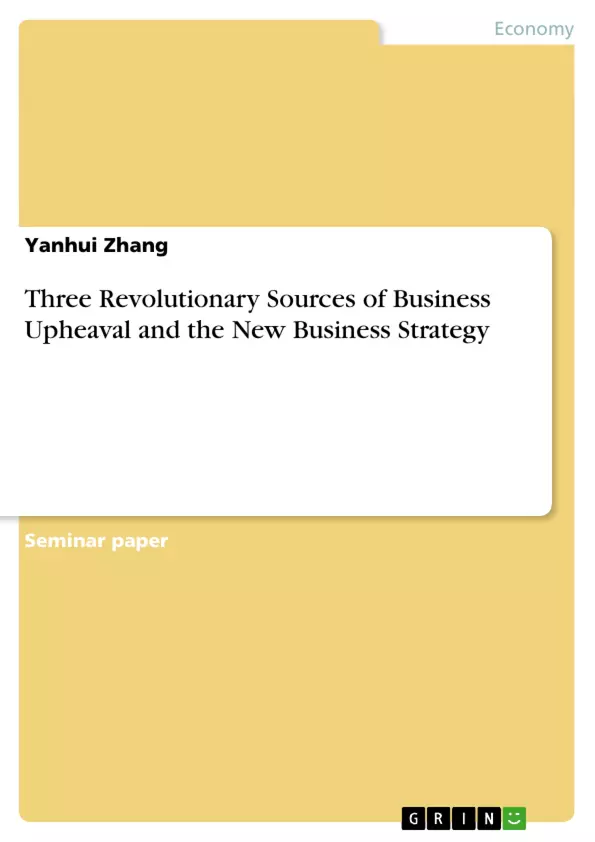Demos, Chung and Beck stated in their paper “ The New Strategy and Why It Is New” (2001) that the traditional approach of strategy to create and protect long-term defensible competitive advantage in the marketplace no longer holds in the new millennium. Their arguments were based on three revolutionary sources of business upheaval: 1) New and disruptive technologies; 2) Deregulation and globalization; 3) Capital markets. These revolutionary changes in global and sectoral economies have converted the traditional linear value chain into a “three-dimensional value constellation”, “where both threats and opportunities can arise more easily in almost any one of a firm’s competencies or capabilities”. To solve this problem, traditional ways of developing strategies must be changed. They further pointed out the way out in the changing environment that “traditional strategies aimed only at shaping and protecting long-term positions need to be supplanted by a focus on continuous transformation, to forge capabilities required to win the next game …” This paper agrees on this point of view and will combine this new strategic thinking with practice by analysing two worldwide successful multinationals: IKEA and Canon, to demonstrate how the new strategy functions and determines companies’ success in the new millennium.
Inhaltsverzeichnis (Table of Contents)
- Introduction
- Literature Review
- The New Business Strategy in Practice: Case Studies
- IKEA
- Canon
- Conclusion
- Reference
Zielsetzung und Themenschwerpunkte (Objectives and Key Themes)
This paper analyzes the new business strategy in the context of the three revolutionary sources of business upheaval: new and disruptive technologies, deregulation and globalization, and capital markets. It argues that traditional strategic approaches no longer hold in the new millennium and proposes a focus on continuous transformation and the development of new capabilities to thrive in the changing environment.
- The evolution of business strategy in the face of disruptive forces.
- The impact of globalization, deregulation, and new technologies on business strategy.
- The shift from traditional, static strategy to a more dynamic, transformative approach.
- The importance of adaptability, flexibility, and innovation in the new business landscape.
- The role of case studies in illustrating the application and effectiveness of the new business strategy.
Zusammenfassung der Kapitel (Chapter Summaries)
- Introduction: This chapter sets the stage by outlining the argument that traditional business strategies are no longer effective due to the three revolutionary sources of business upheaval. It introduces the concept of a new business strategy focused on continuous transformation and the development of new capabilities.
- Literature Review: This chapter provides a comprehensive overview of the evolution of strategic thinking in the last two decades, highlighting key figures such as Porter, Mintzberg & Waters, Ohmae, and De Wit & Meyer. It discusses the limitations of traditional strategic approaches in the face of rapid technological advancements, globalization, and deregulation.
- The New Business Strategy in Practice: Case Studies (IKEA): This chapter explores the case study of IKEA, a global furniture giant that has successfully adapted to the changing business environment. It examines IKEA's innovative business model, its focus on cost leadership, and its strategic responses to globalization and deregulation.
Schlüsselwörter (Keywords)
The main keywords and focus topics of this paper include: business strategy, continuous transformation, new business strategy, disruptive technologies, globalization, deregulation, capital markets, case studies, IKEA, cost leadership, competitive advantage, innovation, adaptability.
- Citar trabajo
- Yanhui Zhang (Autor), 2003, Three Revolutionary Sources of Business Upheaval and the New Business Strategy, Múnich, GRIN Verlag, https://www.grin.com/document/39037



